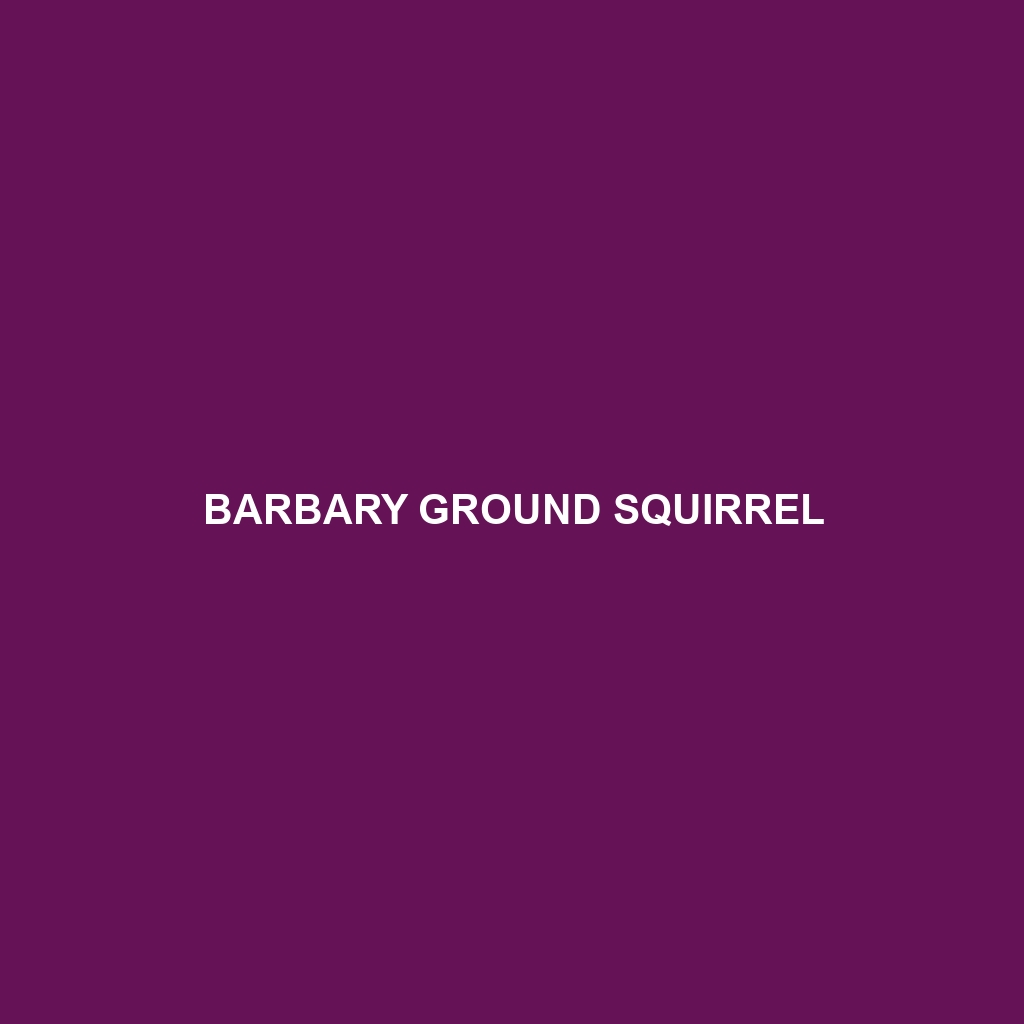Barbary Ground Squirrel: A Comprehensive Species Description
Common Name: Barbary Ground Squirrel
Scientific Name: Atlantoxerus getulus
Habitat
The Barbary Ground Squirrel is primarily found in North Africa, particularly in the regions of Morocco and Algeria. These resilient rodents prefer semi-arid climates, often inhabiting grasslands, scrublands, and open forests. They thrive in rocky terrains and areas with abundant vegetation, which provide shelter from predators and access to food.
Physical Characteristics
Barbary Ground Squirrels typically range from 25 to 30 cm in length, with a bushy tail adding an extra 20 to 25 cm. They have a stout and robust body, characterized by a distinctive coat that varies from yellowish-brown to grey. Their fur features dark stripes along the back, and they possess small, rounded ears and bright, expressive eyes. Notably, their long claws are adapted for digging, allowing them to excavate burrows effectively.
Behavior
These squirrels exhibit a range of interesting behaviors. They are predominantly diurnal, engaging in most of their activities during the day. Barbary Ground Squirrels are known for their social nature, often living in colonies. Communication within the group consists of various vocalizations and body language. They are also skilled climbers and are often observed foraging on the ground or climbing trees to search for food.
Diet
The diet of the Barbary Ground Squirrel mainly consists of seeds, nuts, fruits, and various types of vegetation. They are opportunistic feeders and will adjust their diet based on the availability of food sources in their habitat. Their strong incisors help them effectively crack open hard seeds and nuts, making them well-suited for their dietary needs.
Reproduction
Breeding typically occurs in the spring, with a gestation period of approximately 30 days. Female Barbary Ground Squirrels usually give birth to a litter of 3 to 5 pups. The young are born blind and helpless, relying entirely on their mother for care. After about 6 weeks, the offspring begin to explore their environment and are weaned by 8 weeks, eventually becoming independent.
Conservation Status
The Barbary Ground Squirrel is currently classified as “Least Concern” by the IUCN Red List, though habitat destruction and human encroachment pose potential threats to local populations. Conservation efforts are needed to monitor these pressures and maintain their natural habitats.
Interesting Facts
One fascinating fact about the Barbary Ground Squirrel is its ability to survive in harsh environmental conditions, often going long periods without water. Additionally, these squirrels have adapted to live in close proximity to human settlements, sometimes foraging in gardens and agricultural fields.
Role in Ecosystem
The Barbary Ground Squirrel plays an essential role in its ecosystem as both a herbivore and prey species. By consuming seeds and vegetation, they help in seed dispersal, promoting plant diversity. Additionally, they serve as a food source for various predators, including birds of prey and mammals, thus contributing to the food chain’s balance.
